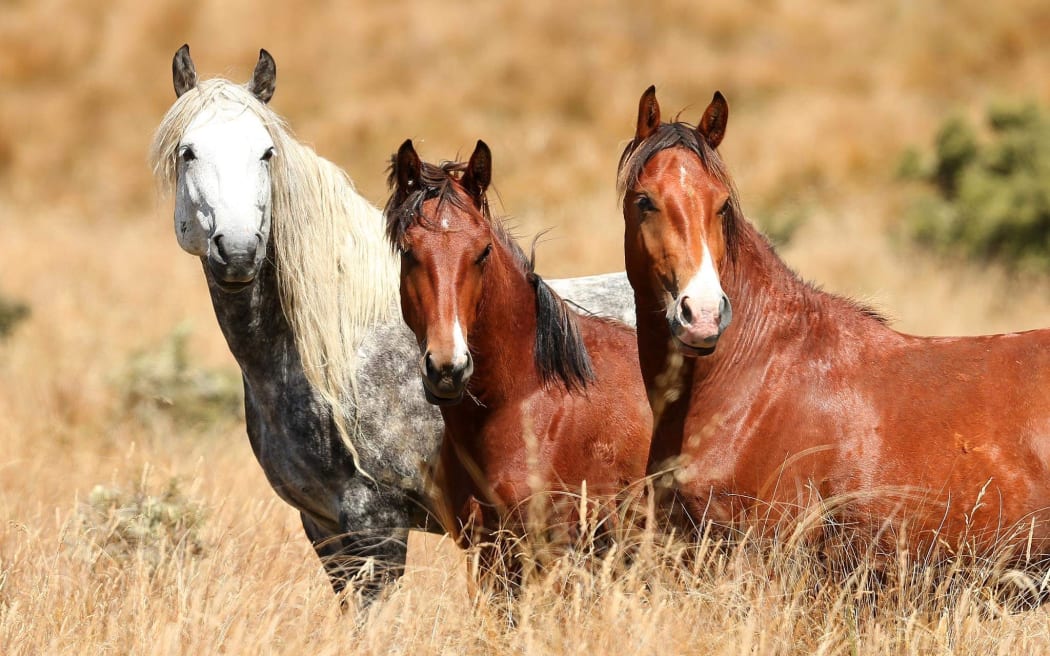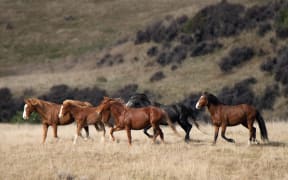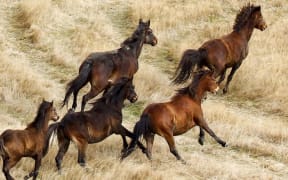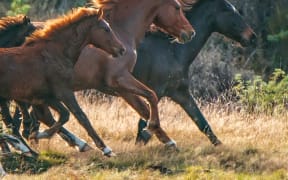
The Department of Conservation's muster of Kaimanawa wild horses is due to start next month. Photo: Kaimanawa Heritage Horses
About 80 people have applied to re-home a kaimanawa wild horse, fewer than in other years, as the cost of living crunch bites.
The Department of Conservation managed muster is due to start later this month.
Previously the sustainable herd level has been set at 300; with horses over and above that rounded up for rehoming.
Too many of them roaming can put pressure on food supplies and native species.
But re-homing the horses can be costly and there is concern redundancies, recession and rising prices might make it tougher this time around.
Marilyn Jenks is with Kaimanawa Heritage Horses which helps re-home the horses, and told Checkpoint about 80 people had now applied to re-home one of the horses - but in past years they had re-homed up to 200 horses.
She said although they were expecting the number of applications to be way down this year there was a last minute rush ahead of tonight's application cut-off.
Not all of them would necessarily go ahead because the horse's new home needed to be checked to ensure it was suitable, she said.
Asked what was needed to re-home a Kaimanawa horse, Jenks said it took a lot of common sense.
"It takes a patient person, you've got to have good facilities, you've got to have a cattle yard because they are put into cattle yards, you've got to have a companion, you can't just take one horse because horses shouldn't be on their own."
Kaimanawa horse owners needed to take it very gently because the horse had lost everything with mares having had their foals removed and family groups being broken up, she said.
"So they're in shock, so I think the best thing you can do is just go quietly, have a companion ready for them, let them get used to things and they'll eventually quieten down and just take it slowly from there."
The 80 applications was lower than the number of horses set to be removed from the area.
"The last count was 530 horses and of course the allowed amount out there is 300 so means that 230 are supposed to be removed," Jenks said.
The Kaimanawa Wild Horse Advisory Group would be discussing what happened with the remaining horses, she said.
"I think that'll [the 80] bring the numbers down and the next muster will hopefully bring the numbers down again and hopefully nothing untoward will happen."
Jenks said she would like to see the allowed herd size increased from 300 horses to up to 450 given the area was 63,000 hectares "and three or four hundred horses are really just a dot on the landscape".
Since 2022 some mares have been given a contraceptive injection in order to manage the herd, she said.
"What happens is the contraceptive injection will not interfere with the foal that the mare is carrying, she'll still foal normally, then she shouldn't be able to foal - it's not 100 percent on each horse either of course."
The contraceptive injection should prevent the mare from foaling for three or four years, she said.
But she said it would likely take three or four years before a real reduction in the herd size would be seen.
There were 58 mares injected in 2022 and they were hoping to do another 50 at the next muster, she said.





